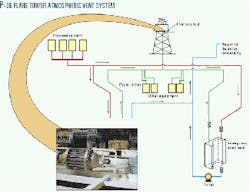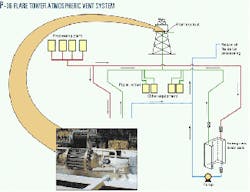Complicating the handling of the aftermath of the P-36 platform disaster off Brazil for operator Petroleo Brasileiro SA is a blossoming scandal over whether the state firm knew of problems with the structure before explosions crippled it, killing 11 workers.
The platform, converted from a semisubmersible drilling rig, sank in 1,350 m of water at Roncador field in the Campos basin, 80 miles off Rio de Janeiro, late last month (OGJ, Mar. 26, 2001, p. 24).
Investigations
Brazil's Nation Oil Works Union (FUP) has released internal documents from Petrobras that FUP alleges shows Petrobras knew of problems with the structure before it exploded and sank.
On Mar. 22, the death toll, which had been first logged at 10, rose to 11 with the death of a worker who was hospitalized with severe burns suffered in the Mar. 15 blasts.
Fernando Carvalho, a FUP director, said irregularities existed with the placement of a drainage tank inside the flare tower, resulting in improper venting from the accumulation of water and oil left over from petroleum production (see illustration, p. 33).
"Drainage tanks cannot be confined in a column, because if an explosion occurs, the gas will have no escape route," Carvalho said.
Police from the city of Macae, next to the Campos basin, said they would request the original Petrobras documents in their investigation of the FUP allegations.
Rio de Janeiro federal prosecutors also said they would investigate whether there had been negligence on the part of Petrobras executives.
Meanwhile, Brazil's National Petroleum Agency (ANP) and the nation's navy are forming a commission to investigate responsibility for the accident.
ANP has been developing rules and procedures that foreign oil companies operating in Brazil must follow, including risk management, emergency response, and environmental protection.
Losses mount
The platform was insured for $500 million, but the cost of the lost production to Petrobras could total about $450 million this year, company executives estimated.
The P-36 was projected to produce 90,000 b/d of crude by Dec. 31 and was due to process 180,000 b/d in 2004. At the time of the blasts, it was producing 84,000 b/d of 31° gravity oil.
Wagner Victer, Rio de Janeiro state energy secretary, estimated Rio de Janeiro and Espirito Santo states will lose $65 million in royalties this year. That figure could change with fluctuations in crude prices and currency exchange rates. The Campos basin is off both Rio de Janeiro and Espirito Santo.



